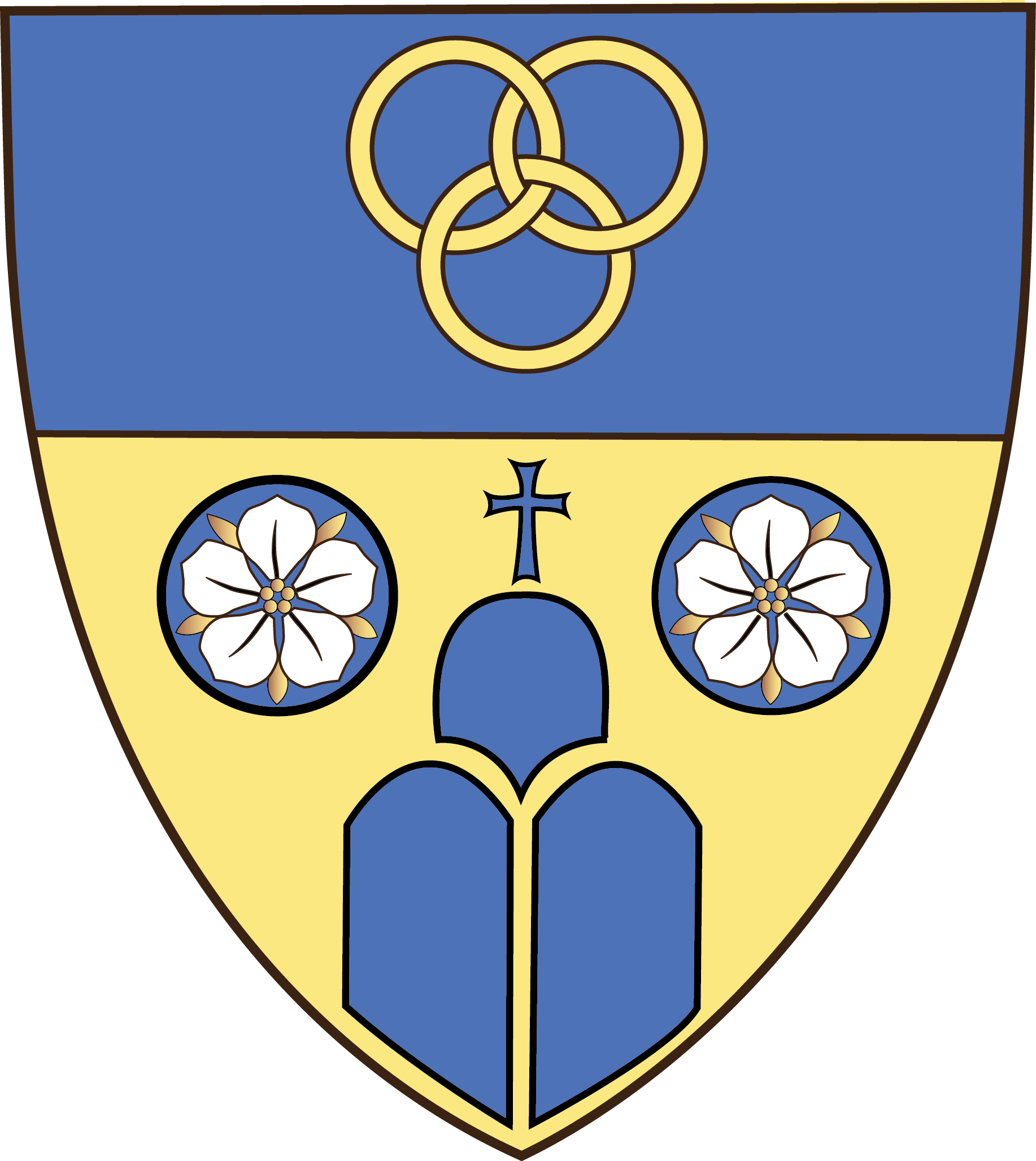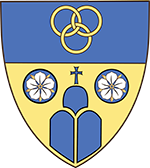Coat of Arms
Since the Middle Ages, it has been common for soldiers and nobility to identify themselves with symbols and emblems on seals, banners, shields, and surcoats. From this eventually developed the science of heraldry.
Both civic and ecclesiastical heraldry follow the same rules with regard to the composition and definition of a shield. But what is distinctive about ecclesiastical heraldry is the religious motifs which adorn it. In drawing up its coat of arms, Westminster Abbey selected from the wealth of available symbols to show forth its particular origin, identity, and mission. A description of its coat-of-arms follows.
Coat of Arms
Heraldic Description
Designed by Dom William W. Bayne osb
OR, A MOUNT OF THREE COUPEAUX SURMOUNTED BY A CROSS AZURE BETWEEN TWO ROUNDELS OF THE LAST EACH CHARGED WITH A FRAISE ARGENT SEEDED AND LEAVED, OR ON A CHIEF AZURE THREE ANULETS INTERLACED OR.
- Colours: Blue (azure) and gold (or), colours of the Benedictine Order and of the Fraser Family.
- Interlaced rings: symbolic of the Blessed Trinity; uppermost on the shield, designating the purpose of Benedictine life, to seek God, and respond to God’s call to live the Trinitarian Life: “To be a gift of the other in a communion of persons” (St. John Paul II).
- Strawberry blossom: emblem of the Scottish family Frazer or Fraser, whose name is of French origin – “fraisier”, strawberry – hence the strawberry blossom on their coat-of-arms. The Catholic explorer Simon Fraser discovered the large river named after him and flowing past Westminster Abbey on its way to the Pacific Ocean 65 kilometres westward. The French and English names, also, may symbolize the bilingual heritage of Canada. By happy coincidence, finally, Mission City, the town nearest the Abbey, is centred in a strawberry-growing area.
- Tri-mount and cross: traditional Benedictine emblem, particularly suited to Westminster’s location above the Fraser Valley.


